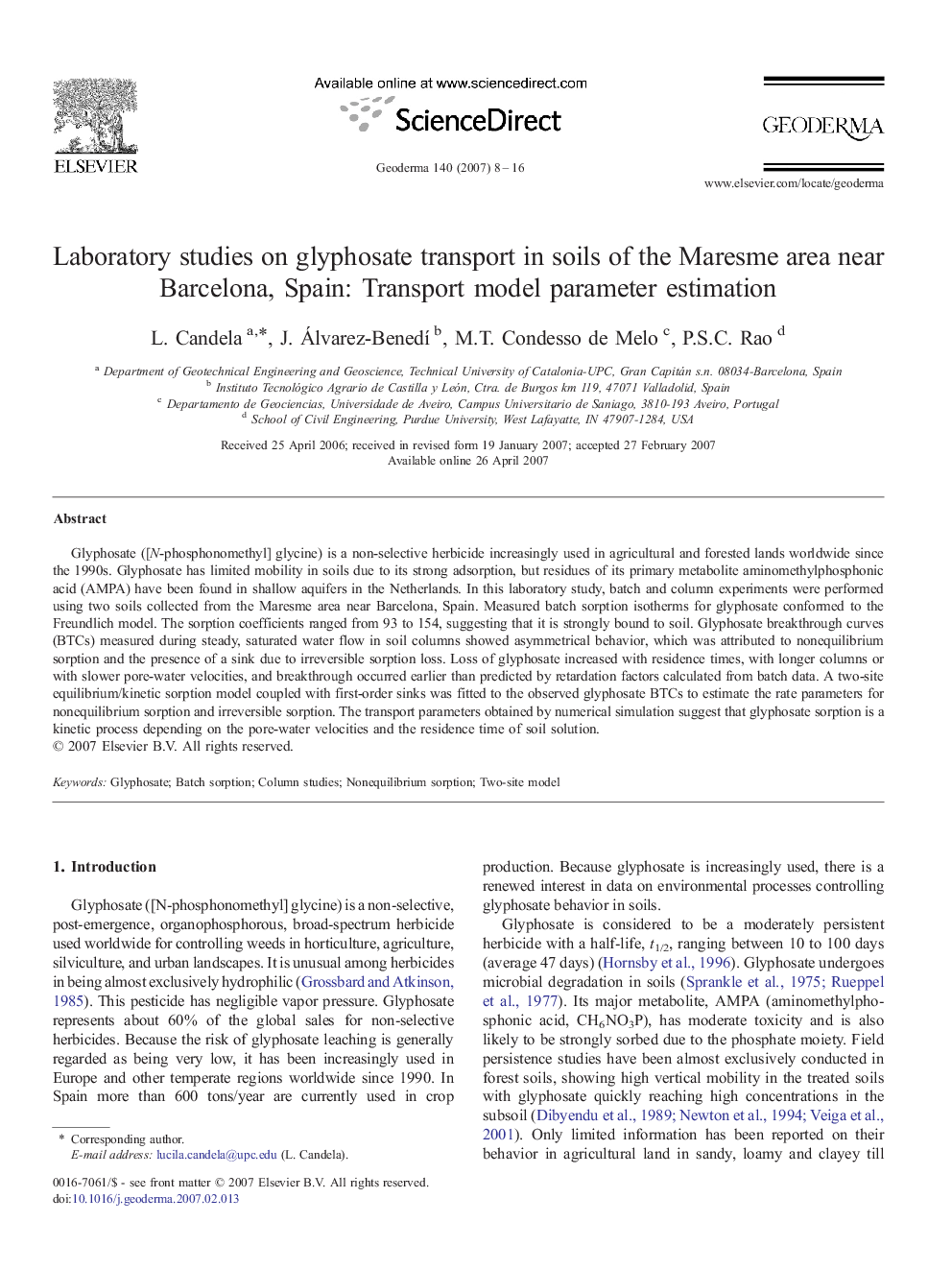| Article ID | Journal | Published Year | Pages | File Type |
|---|---|---|---|---|
| 4575392 | Geoderma | 2007 | 9 Pages |
Glyphosate ([N-phosphonomethyl] glycine) is a non-selective herbicide increasingly used in agricultural and forested lands worldwide since the 1990s. Glyphosate has limited mobility in soils due to its strong adsorption, but residues of its primary metabolite aminomethylphosphonic acid (AMPA) have been found in shallow aquifers in the Netherlands. In this laboratory study, batch and column experiments were performed using two soils collected from the Maresme area near Barcelona, Spain. Measured batch sorption isotherms for glyphosate conformed to the Freundlich model. The sorption coefficients ranged from 93 to 154, suggesting that it is strongly bound to soil. Glyphosate breakthrough curves (BTCs) measured during steady, saturated water flow in soil columns showed asymmetrical behavior, which was attributed to nonequilibrium sorption and the presence of a sink due to irreversible sorption loss. Loss of glyphosate increased with residence times, with longer columns or with slower pore-water velocities, and breakthrough occurred earlier than predicted by retardation factors calculated from batch data. A two-site equilibrium/kinetic sorption model coupled with first-order sinks was fitted to the observed glyphosate BTCs to estimate the rate parameters for nonequilibrium sorption and irreversible sorption. The transport parameters obtained by numerical simulation suggest that glyphosate sorption is a kinetic process depending on the pore-water velocities and the residence time of soil solution.
